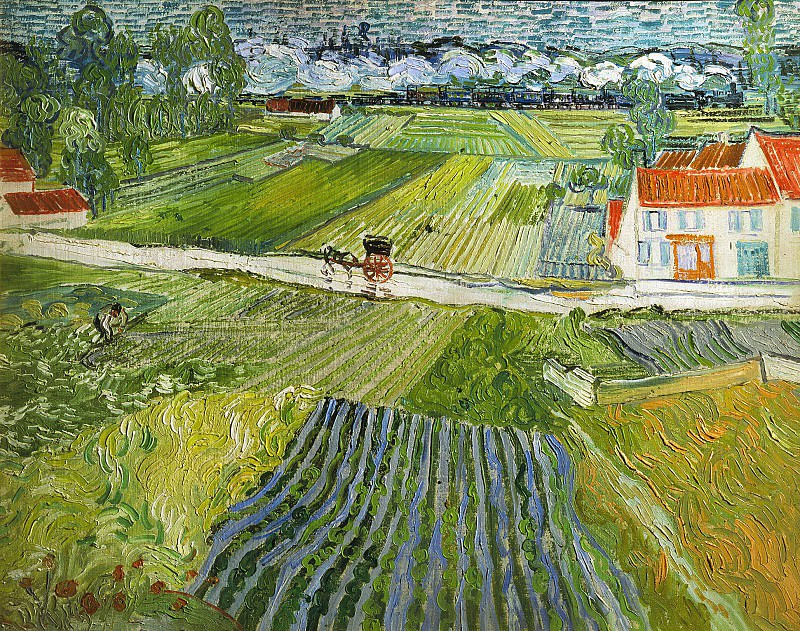Landscape at Auvers after Rain Vincent van Gogh (1853-1890)
Vincent van Gogh – Landscape at Auvers after Rain
Edit attribution
Download full size: 2059×1624 px (1,0 Mb)
Painter: Vincent van Gogh
Location: Pushkin State Museum, Moscow (ГМИИ им. Пушкина).
The canvas is one of the great master’s last works. He painted it a few months before his death in the small town of Auvers-sur-Oise, where he spent the last year of his life. It was one of the landscapes of this town and was captured by the artist on the canvas. Because of what is depicted in the picture, it has another name, "Landscape with a wagon and train." In the center of the picture just depicts this very carriage.
Description of Vincent van Gogh’s painting Landscape in Auvers after Rain (Landscape with a Wagon and a Train)
The canvas is one of the great master’s last works. He painted it a few months before his death in the small town of Auvers-sur-Oise, where he spent the last year of his life. It was one of the landscapes of this town and was captured by the artist on the canvas.
Because of what is depicted in the picture, it has another name, "Landscape with a wagon and train." In the center of the picture just depicts this very carriage. Its size is insignificant, but it attracts attention with its wheel. The artist painted it in red-orange, making the color as bright as possible.
The choice of color allowed to draw the viewer’s attention and at the same time reveals the symbolism of the image. If we consider the wheel as an allegory of human life, the bright color indicates its saturation with events and people. The life of the artist can also rightly be considered bright.
Another symbol is the sun. Burning and bright circle that passes its way across the sky from dawn to dusk. The entire painting is full of life, starting with the symbolic bright wheel and the colorful fields around it. Van Gogh, anticipating his imminent death, continues to love life and wants to show the beauty of the world around him to the viewer.
His fields are full of colors: lush green grass, pink alfalfa flowers, purple and black earth, dark green young shoots of plants and yellowish hues of mature grass. Amidst the riot of colors, the figure of the reaper, he is depicted at work, becomes a loud chord of vitality. Bent, which makes him seem even smaller, he does not become inconspicuous. He is also the embodiment of life in this painting.
In the background, the colorfulness of the painting is conveyed by yellowing fields of wheat and bluish hills, with a train moving into the invisible distance. Behind it remains a long and thick white trail of smoke, like a man’s memories of a life lived, which is full of joy and sorrow.
Кому понравилось
Пожалуйста, подождите
На эту операцию может потребоваться несколько секунд.
Информация появится в новом окне,
если открытие новых окон не запрещено в настройках вашего браузера.
You need to login
Для работы с коллекциями – пожалуйста, войдите в аккаунт (open in new window).




















You cannot comment Why?
In Landscape at Auvers after Rain, Vincent van Gogh depicts a vibrant, post-rain scene of the French countryside. The painting is characterized by its energetic brushstrokes and a bold use of color, particularly various shades of green, yellow, and blue.
In the foreground, we see rows of crops, possibly recently tilled or planted, with distinct patterns of blue and green. To the left, a solitary figure, likely a farmer, is bent over, tending to the land. A road cuts across the middle ground, leading the eye towards a horse-drawn carriage. Along the road, there are a few houses with distinctive red-tiled roofs. In the background, a line of trees emerges, and beyond them, a suggestion of factory buildings or perhaps a train with smoke billowing into the sky. The sky itself is a turbulent mix of blues and whites, reflecting the recent rain and the dramatic atmosphere.
The subtexts of this painting can be interpreted in several ways: